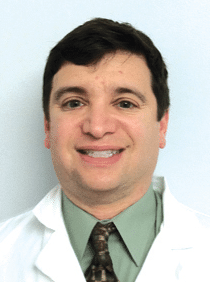
More Dental Health Articles
Understanding Jaw Pain
More than 15 percent of American adults suffer from chronic facial pain. Some common symptoms include pain in or around the ear, tenderness of the jaw, clicking or popping noises when opening the mouth, or even headaches and neck aches.
Two joints and several jaw muscles make it possible to open and close the mouth. They work together when you chew, speak, and swallow.
These structures include muscles and ligaments, as well as the jaw bone, the mandible (lower jaw) with two joints, the TMJ’s.
The TM joint is one of the most complex joints in the body. Located on each side of the head, these joints work together and can make many different movements, including a combination of rotating and translocational (gliding) action, used when chewing and speaking.
Several muscles help open and close the mouth. They control the lower jaw (mandible) as it moves forward, backward, and side-to-side. Both TM joints are involved in these movements. Each TM joint has a disc between the ball and socket. The disc cushions the load while enabling the jaw to open widely and perform rotating and translocational movements. Any problem that prevents this complex system of muscles, ligaments, discs and bones from working properly may result in a painful TMJ disorder.
A dentist can help identify the source of the pain with a thorough exam and appropriate X-rays. Often, it’s a sinus, toothache or an early stage of periodontal disease. But for some pain, the cause is not so easily diagnosed. The pain could be related to the facial muscles, the jaw or temporomandibular joint, located in the front of the ear. Treatments for this pain may include stress reducing exercises, muscle relaxants, or wearing a mouth protector to prevent teeth grinding. They’ve been successful for many and your dentist can recommend which is best for you.
Several conditions may be related to TMD, but they can be quite varied, and they are often difficult to pinpoint. TM disorders can result when the jaw muscles or jaw joints are affected.
The joint, ligaments, and muscles used for chewing and grinding food may all be involved. In some cases, it is not possible to clearly determine the causes. In some complex cases, where more than one doctor is involved, it may be difficult to get a consensus on treatment.
Some TM problems result from arthritis, dislocation, and injury. All of these conditions can cause pain and dysfunction. Muscles that move the joints are also subject to injury and disease. Injuries to the jaw, head or neck, and diseases such as arthritis, might result in some TM problems. Other factors that relate to the way the teeth fit together-the bite-may cause some types of TMD. Stress is thought to be a factor. TMD affects women of childbearing age more than men, or older men and women.
There are several ways the TMJ disorders may be treated. Your dentist will recommend what type of treatment is needed for your problem or recommend that you be referred to a specialist. Treatment may involve a series of steps. The step-by-step plan is in your best interest because only minor, relatively non-invasive treatment may be needed.
Other Articles You May Find of Interest...
- Appliances Are In Now: How To Manage TMJ Disorder
- Why The Tooth Fairy Is Very Fun – and Important!
- Let’s Smile Dental’s 7&Up Club
- Strengthening Smiles: Understanding the Importance of Splinting Periodontally Involved Teeth
- Understanding Soft Tissue Grafting: A Key To Periodontal Health
- New Solutions for Dentures and Dental Implants
- Preventing Tooth Injuries During Your Child’s Active Summer

















